#when the wind blows raymond briggs
Photo






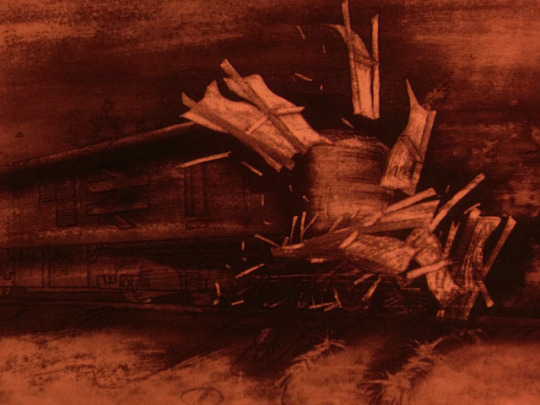



When the Wind Blows (Jimmy T. Murakami, 1986).
#when the wind blows#when the wind blows (1986)#jimmy t. murakami#raymond briggs#errol bryant#richard fawdry
177 notes
·
View notes
Text
deaths scenes exclusive go here
#animation#adult animation#the breadwinner#waltz with bashir#when the wind blows#raymond briggs#grave of the fireflies#studio ghibli#ari foleman#mary and max#padak#padak padak#korean animation#barefoot gen#don hertzfeldt#it's such a beautiful day#movie trauma#horror animation#sad animation#content warning#trigger warning
69 notes
·
View notes
Text





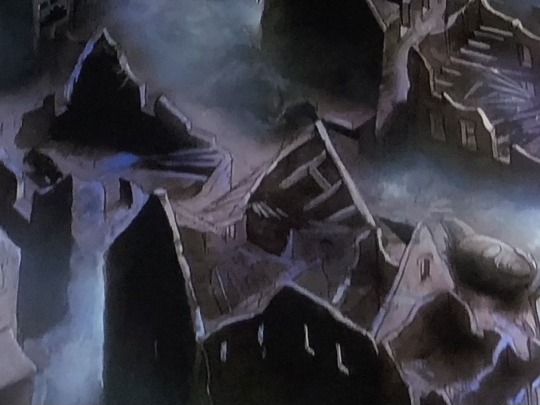
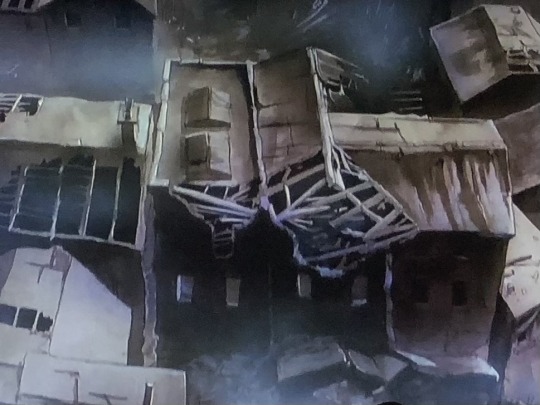


#When the Wind Blows#1986#Jimmy T. Murakami#Raymond Briggs#nuclear war#adult animation#apocalypse#dark animation
10 notes
·
View notes
Text
Coming off of Barefoot Gen and When the Wind Blows breaks and terrifies you of nuclear energy and warpower so much- one a realworld horrific atrocity it's creator barely LIVED THROUGH, and the other a fictional one but one where you have to watch your two protagonists slowly and agonizingly die -you'd think just those films existence would be enough to never want someone playing with this stuff again....
...and then you hear Russia and Israel talk so happily about using nukes and you realize we've learned absolutely nothing as a society.
MAD
3 notes
·
View notes
Text
“1980's Gentleman Jim introduced the Bloggs, a couple trying to make their way amid the trials and tribulations of the working class day-to-day, envisioning a life beyond their station. Though given a tough go at it, the Bloggs — inspired by Briggs' similarly-surnamed parents — persevered, their story as silly as it was heartbreaking, pushed on, almost, by Briggs' playful illustrations.
This was a multi-hyphenate creator who lent himself to social realism, capturing the gritty real lives of everyday people; that his prism was whimsical watercolour in children's picturebooks made his work all the more accessible. No example can be better than the film adaptation of his 1982 work When the Wind Blows.
Emerging from a period of Cold War mudslinging that threatened to hit devastating critical mass, When the Wind Blows confronts the well-meaning Bloggs with the unspeakable horrors of nuclear conflict.
It's an unflinching piece, brimming not with political fury but cold truth. Briggs doesn't imagine humanity emerging from the rubble of devastation to rebuild a better world. The landscape is rendered a scorched wasteland, the queasy smell of burning flesh carried by the wind. Propaganda is puppetry, or so the moral goes; nobody will survive the bomb, not even the harmless grannies pottering about in their allotments.
(…)
Fiction speculating on the impending nuclear holocaust is frightening because it isn't outside the realm of belief. I can't imagine what it might've been like to see something like When the Wind Blows back in the late-'80s, when tensions with the USSR surged, Reagan denouncing the Russians as an “evil empire,” and the doomsday clock ticked towards an early curtain call. But of course, it rushed back to mind — as with Threads, and indeed The Day After, seen by 100 million Americans when it premiered in 1983 — in the wake of the Ukraine crisis, with Putin ordering his nuclear forces on high alert, and Russian state media sabre rattling with the threat of ICBMs. (Christ, you'd think climate change was enough.)”
“As a full blown antiwar broadside, When The Wind Blows is hugely effective and deeply affecting. The sheer ordinariness of the old couple and the utter devastation that is visited on their world by the nuclear strike means the horror really hits home.
(…)
Directed by Jimmy Murakami and boasting a quality soundtrack that embraces everything from David Bowie to Roger Waters and even Squeeze, this remains one of the most emotionally draining “cartoons” you’ll ever see. Unleavened by any real humour, it’s bleak but strangely beautiful.”
#when the wind blows#raymond briggs#murakami#jimmy murakami#nuclear war#wwiii#david bowie#roger waters
8 notes
·
View notes
Text


Author and Illustrator Extraordinaire Raymond Briggs
42 notes
·
View notes
Photo
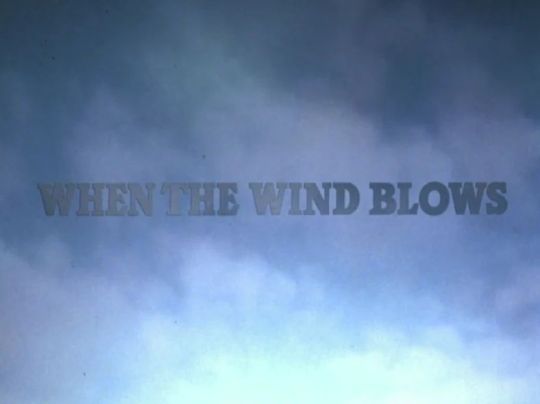
"When The Wind Blows" (1986)
Directed by Jimmy T. Murakami
(Animated/Drama/War)
#when the wind blows#1986#jimmy t. murakami#raymond briggs#peggy ashcroft#film#cinema#war movies#cinema title cards
7 notes
·
View notes
Text
Rest in Peace, Raymond. I hope The Snowman is cherished eternally.
14 notes
·
View notes
Text
Tributes to Raymond Briggs from comic creators, authors, and a guide to his books
A fond farewell to the ground-breaking comic creator, illustrator and master storyteller, Raymond Briggs

View On WordPress
#Ethel & Ernest#Father Christmas#Fungus the Bogeyman#Raymond Briggs#The Snowman#When the Wind Blows
11 notes
·
View notes
Text
2 great icons have tragically left us. May they rest in peace

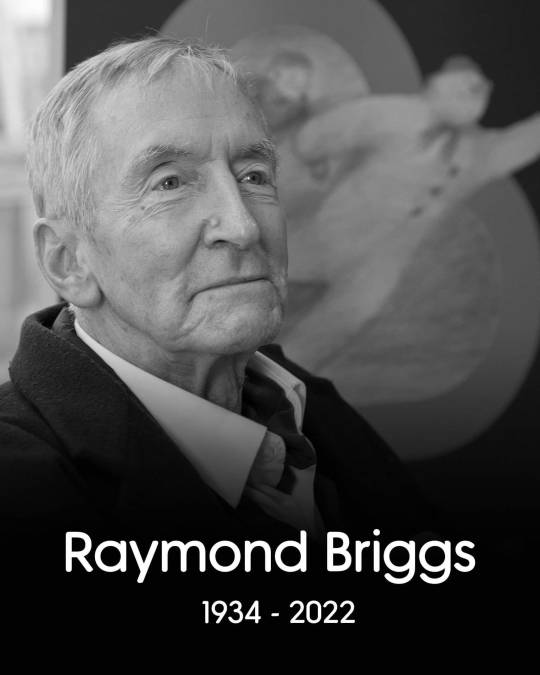
#rip olivia newton john#in memory of Olivia Newton John#grease#sandy olsson#xanadu#kira#pop music#country music#soft rock#adult contemporary#pop rock#country pop#rip Raymond Briggs#in memory of Raymond Briggs#the snowmen#father christmas#the bear#fungus the bogeyman#when the wind blows#jim and the beanstalk#ug#ethel & ernest
17 notes
·
View notes
Text
Raymond Briggs Wife: Who Was Raymond Briggs Wife
Raymond Briggs Wife: Who Was Raymond Briggs Wife
A British author, artist, cartoonist, and creator of graphic novels, Raymond Briggs. He was a critical and commercial success with both adults and kids, but in Britain, he is most known for his work on The Snowman, a book without words whose animated version is broadcast on television and whose musical adaption is performed each Christmas.
Raymond Briggs Snowman
Briggs received the British…
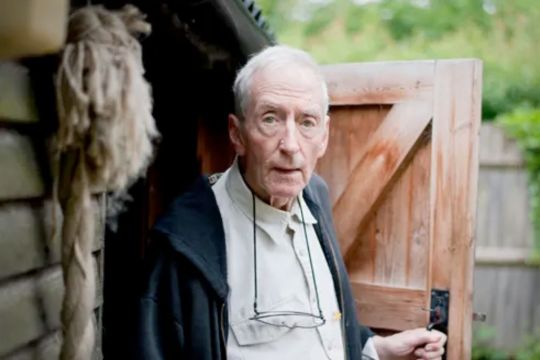
View On WordPress
#raymond briggs books#raymond briggs father christmas#raymond briggs nuclear war#raymond briggs signed books#raymond briggs snowman wrapping paper#raymond briggs the bear#raymond briggs the bear 1998 vhs#raymond briggs the snowman#raymond briggs when the wind blows#raymond briggs wife
0 notes
Text
TYO Essay
A while back, I mentioned I wrote an essay for my previous uni course where I used TYO as a source to look at the early 1980s. @a-a-a-anon expressed an interest in reading it, so here ya go! The quality of it is seriously iffy (I was 18/19 when I wrote it and had no idea how to actually write or reference academic essays yet, and just the quality of the writing makes me cringe a bit). There was also more I wanted to say but couldn't due to the word limit (don't remember what these other things were now). Despite all that, the lecturer liked it, and it was cool I got to write about TYO for uni.
The Young Ones as a Cultural Source for Early 1980s Britain
Although today in Britain the future often feels uncertain – the global pandemic notwithstanding, Brexit is still looming on the horizon – the Britons of 40 years ago doubtlessly felt similarly, albeit for different reasons. In the early 1980s, the threat of nuclear war was palpable, as the existence of Protect and Survive[1] attests to. Nuclear war paranoia influenced British culture in the 1980s, with bleak examples such as the BBC film Threads (1984) and Raymond Briggs’ When the Wind Blows (1986) still remembered keenly today. Both fictionalisations of nuclear war featured material from Protect and Survive and highlighted the message of contemporary nuclear disarmament protestors: no one can win a nuclear war. Of the less apocalyptic issues, unemployment hit 3 million (about 11.7%[2]) in 1983 – for comparison, in 2019 it was estimated to be at 1.281 million (about 3.6%[3]). The Thatcher administrations’ efforts to break from the post-war consensus and embrace neo-liberalism created divisions in society. Yet, amidst threats of nuclear war, mass unemployment, the decline of British industry and the growth of individualism, a cultural revolution in comedy dubbed “alternative comedy” was fast taking hold in Britain – and in much the same way Thatcherism’s impacts can still be felt on society today, so too can alternative comedy’s.
Running for 2 series (12 episodes in total) on BBC2 between 1982-84, anarchic and slightly surreal sitcom The Young Ones epitomised the break between older styles of comedy and the new wave. Although The Young Ones has been called ground-breaking and classic, it is also now regarded as somewhat dated for its jokes pertaining to current events. Therefore, its scripts are an interesting source for an insight into the time in which it was produced and based: early 1980s Britain.
Firstly, it is important to understand what The Young Ones actually was. Written by Ben Elton, Rik Mayall and Lise Mayer[4] and with additional material provided by Alexei Sayle, it followed the misadventures of four vastly different university students at the fictional Scumbag College in North London. Whilst the four were never seen doing anything remotely akin to studying, it aimed at being representative of university life, students and the squalor they lived in. The show was not a conventional sitcom in that it did not pertain to a family and it featured a musical act in every episode so that it could be classified as “light entertainment”, as the BBC had no further budget available for sitcoms at the time. Because many of its principal actors came from the stand-up comedy circuit, there was an emphasis on excitement and unpredictability over discernible plots and many memorable scenes featured characters injuring themselves and others, destroying bits of the set and crashing through walls, as well as randomly interspersed and unrelated cutaway gag segments. There was a cartoonish level of slapstick violence, swearing and toilet humour, which appear milder to today’s palate than 40 years ago.
British audiences were divided by The Young Ones mostly along age lines, with younger viewers engaging readily with this new style of comedy and older viewers seeing it as unnecessarily vulgar and silly. Indeed, the characters that had been transplanted from their actors’ stand-up routines were deliberately disgusting, exaggerated caricatures and horrible to one another. Mayall himself played wannabe lefty anarchist Rick, who frequently came to rather explosive blows with the violent punk medical student, Vyvyan (played by Mayall’s comedy partner, Adrian Edmondson). Also featured was badly done to, depressed hippie Neil (played by Nigel Planer) and the mysterious leader and straight man of the group, Mike The Cool Person (played by Christopher Ryan, the only one of the core cast without a comedy background). Sayle too appeared in every episode as either their hated landlord Balowski or a member of his family, where he would deliver a short stand-up monologue to the camera. The show’s title (and opening theme) was derived from the Cliff Richard song of the same name, as Mayall’s character was a huge fan.
The Young Ones took on the issues of its day, perhaps none more so than the episode “Bomb”. “Bomb” uses dark humour to address fears over nuclear war by having an atom bomb land in the characters’ kitchen at the start of the episode. Even before the characters deal with the unexploded bomb, the script is already hinting at the theme of nuclear war in this cutaway gag sequence, featuring a family on a packet of cereal:
FATHER: Would you two shut up and keep smiling? We’re supposed to be the ideal nuclear family!
GIRL: Post-nuclear, more like!
Not only was this segment ridiculing the “ideal nuclear family” that was promoted by the Thatcher governments – none of the characters posing as a family get along at all and the “father” reveals himself to be gay, thus exposing the lie that there is truly an “ideal” family – it also managed to slip in a quick gag about nuclear war. This reflected a genuine belief by many at the time that nuclear war was coming, especially amongst the young.[5]
When the main characters finally become aware of the bomb in their kitchen, the script offers this response:
NEIL: I’m going upstairs to get the incredibly helpful and informative “Protect and Survive” manual! Nobody better touch this while I’m gone!
This reference to the Protect and Survive manual, which at the time and retrospectively has been regarded as useless in the event of an actual nuclear attack, appears for the purpose of ridiculing it. Having the character of Neil act as though the manual could help deal with something as serious as an atom bomb in the kitchen employs sarcasm as a critical tool. Protect and Survive featured suggestions such as painting the windows of the house white in order to deflect the heat from a blast, which The Young Ones also satirised:
RICK: Neil, can you lend me five- What are you doing?
[NEIL is reading his survival manual while painting himself white with a paintbrush]
NEIL: Oh, painting myself white to deflect the blast.
RICK: That’s great, isn’t it? Racial discrimination, even in death! What are these? [indicates a few lunchbags on the table]
NEIL: Sandbags!
The misinterpretation of the manual’s instructions, as well as the substitution of items deemed vital for items found in the house, reflects the feeling that most British households were simply unprepared for a nuclear attack and stood very little chance of survival. This is compounded later in the episode, when the four main characters resort to hiding underneath the kitchen table as a means of escaping the blast of the bomb – something many had resorted to in air raids during WWII but which was drastically inadequate protection against an atom bomb. This episode also portrayed the nihilism in British culture over nuclear war – a nihilism that can be found in other cultural sources, such as The Smiths song “Ask”[6] – through the character of Vyvyan, who spends much of the episode attempting to set the bomb off.
This show being the work of alternative comedians, The Young Ones also utilised its anarchic tone to critique the Thatcher administration of the time. This was usually done through the character of Rick, who blamed Margaret Thatcher for most problems faced by the group. Though his character existed to satirise upper-class closet conservatives as well as overzealous student activists, he was something of a mouthpiece for the left-wing writers. Some of his more memorable outbursts include:
RICK: We haven’t got any money! Vyvyan’s baby will be a pauper! Oliver Twist! Jeffrey Dickens! Back to Victorian values! [directly to camera, angrily] I hope you’re satisfied, Thatcher!
RICK: Neil! The bathroom’s free! Unlike the country under the Thatcherite junta!
Other characters were used to critique the government too:
RICK: School’s out forever! Yeah, come on everyone! Let all your hairs hang out! Do whatever you want!
MIKE: What’s all the excitement, Rick? Has education finally been cut altogether? That’s the only reason I voted Tory.
The first of these is a reference to the 1983 interview in which Thatcher endorsed a return to “Victorian values”. That is, a rolling back of the state to unburden the individual and set them free to prosper, should they put the effort in. This New Right attitude, combined with the high unemployment figures from that year, created the view that Thatcherism was about looking out for “number one”. This wasn’t aided by Employment Secretary Norman Tebbit’s “Get On Your Bike” speech at the Conservative Party Conference in 1981. The Young Ones captured the mood of particularly the youth in such a climate – one in which many felt misunderstood and patronised – in a cutaway segment featuring the fictional TV programme Nozin’ Aroun’:
BAZ: Rol! A lot of my mates say to me, “Oh Baz, what is the point?” What would you say to them?
ROLAND: Well surely, Baz, your mates must realise that there definitely is a point!
BAZ: So a real message of hope and good cheer there – from Roland, a really ace guy!
To summarise; just as is the case today, early 1980s Britons were facing uncertainty. This was especially the case for anyone working in manufacturing industries, as the unsuccess of the Miners’ Strike of 1984 signified a wider trend in British industry. The government’s overarching aim of turning society away from one in which a “nanny state” risked making people idle to one where everyone was free to accumulate wealth that would trickle down to the less well off was never going to be a smooth period to live through. The last tremors of the Cold War didn’t help make the period more bearable. Yet, it is often harder or uncertain times where laughter becomes more valuable to people and The Young Ones – though not to everyone’s political or cultural tastes – undeniably provided some release for younger generations. To call it an entirely accurate depiction of early 1980s Britain would be to forget that its primary purpose was amusement. Nevertheless, it does provide a colourful insight and one that is remembered with fondness by those who grew up watching it, even today.
[1] Protect and Survive was a series of government issued pamphlets, public information films and radio broadcasts produced in the late 1970s/early 1980s, to be distributed 72 hours before a nuclear attack was expected. Public interest meant they were released in 1980.
[2] https://countryeconomy.com/unemployment/uk?dr=1983-12, December 1983
[3] Office for National Statistics, December 2019
[4] All of whom are alumni of the University of Manchester.
[5] After speaking to some adults who were young during this period, Mr Smith revealed how (aged 11 in 1983) he told his class: “I want to be there when the bomb drops. I want to be right next to it so I’m disintegrated and don’t know anything about it.” Additionally, he was under the impression that a bomb would likely be dropped on Piccadilly Gardens, Manchester.
[6] “If it’s not love / Then it’s the bomb / Then it’s the bomb that will bring us together” – S. Morrissey & J. Marr, “Ask”, The World Won’t Listen, 1987
Bibliography:
Sources:
B. Elton, R. Mayall & L. Mayer, “Demolition”, The Young Ones, BBC2, 1982
B. Elton, R. Mayall & L. Mayer, “Bomb”, The Young Ones, BBC2, 1982
B. Elton, R. Mayall & L. Mayer, “Cash”, The Young Ones, BBC2, 1984
B. Elton, R. Mayall & L. Mayer, “Nasty”, The Young Ones, BBC2, 1984
B. Elton, R. Mayall & L. Mayer, “Summer Holiday”, The Young Ones, BBC2, 1984
Central Office of Information, Protect and Survive, Her Majesty’s Stationary Office, 1980 Transcript of Brian Walden interview with Margaret Thatcher for BBC, 1983: https://www.margaretthatcher.org/document/105087
15 notes
·
View notes
Text
RIP Raymond Briggs, creator of classics like:
The Snowman
When the Wind Blows
Father Christmas
Fungus the Bogeyman
22 notes
·
View notes
Text
The museum near my mum's was hosting a Raymond Briggs retrospective and it wasn't until we went today that I realised the absolutely outsize influence Briggs quietly had on my development and sensibilities as an artist. I've never really thought to flag him as one of my Favourite Illustrators but I realised walking around the room that his comics work - reading stuff like Fungus The Bogeyman and Father Christmas as a kid, and When The Wind Blows as a teenager - really formed like the platonic ideal for me of what comics should be and do.
A short list of things I think I've unconsciously learnt from his work without thinking about it:
the amount of character you can wring out of framing and posing
the idea of stylised faces in a highly rendered world
using repetitive panels to create meaning
breaking the edges of panels and frames
energetic lettering
filling up the world your characters inhabit with lots of little details you find entertaining
trying to create worlds and people that feel like Real Things That Exist by drawing on the world around you even if what you're making is a fantasy
borrowing faces and places that fit
it's allowed to be very silly
Anyway it's honestly left me quite emotional looking at his work like this bc I didn't know! I didn't know how much he'd influenced me! and there's something about looking at the artwork with all his notes to self around the margins and relettered phrases and "change this bit"s. there's a spread from fungus the bogeyman where the margins have been repeatedly filled with carefully drawn bubble letters counting down how many thousands of words and hundreds of hours of lettering he still had left to do and I'm just like i see someone is losing his actual mind lettering. relatable.
There was also. one of the last spreads in Ethel and Ernest, and it shows him and his dad coming to the hospital to see his mother's corpse after she died. and everything else on the page is done in his usual repeatedly-photocopied-and-redrawn style and worked through, but the body of his mother is almost just a pencil sketch over loose watercolour. and it's like. looking at that you can really really feel how unbearably hard it was to draw that. and next to that they had the closing spread where Briggs is showing his wife his parents' house after they died, and so right next to this drawing that evidently hurt too much to work on too long, you can see how in-depth and thoughtfully he's drawn the house he grew up in, he's done it brick by brick and every bit of detail worked in like he doesn't want to stop working on it and be done with the house. and idk it left me insanely choked up.
#red said#he died in August i think i missed that#oh i also noticed something i thought was really clever which is when he wants to transition from direct to reported speech#he'll move out of speech bubbles and into a white space with a conversation script written out#and it has a really amazing like. detemporalising effect#you get the sense that the conversation in speech bubbles is a conversation happening here and now in context#and the bit that extends into white space is the essence of an ongoing conversation happening At Some Points#it was in three spreads in the exhibition#one in When The Wind Blows after the blast in the middle of the night when they're trying to work out what to do
9 notes
·
View notes
Text
half past two in the morning seems like the perfect time to read raymond briggs' when the wind blows. this is a sensible decision for me, a person who suffers from paralyzing anxiety and is extraordinarily sensitive to existential dread and watching people be doomed to a horrific slow death. at 2.30 AM in the morning.
5 notes
·
View notes
Text
Gentleman Jim Stacey, leader of the Thieves Guild in Morrowind, may be a reference to children's author Raymond Briggs' comic "Gentleman Jim", in which the main character, Jim, becomes a highwayman to steal from the rich and give to the poor. This is backed up by the fact that Gentleman Jim Stacey attempts to create a new group of Bal Molagmer, who stole from the unjust and gave to those in need.
woah... this is the same author as When the Wind Blows. looking
1 note
·
View note